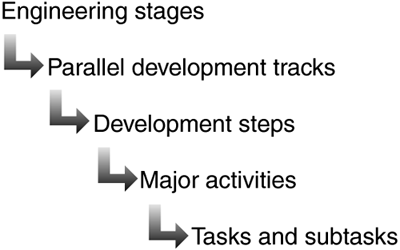How This Book Is Organized
| All software development projects are complicated engineering projects, as demonstrated by the breadth of topics covered in this book. Chapter 0, Guide to the Development Steps, explains the general organization of the development guidelines in Business Intelligence Roadmap , which is as follows : This book is organized into two major parts . Part I, Stages and Steps, describes the 16 development steps, which are introduced in Chapter 0. Part I gives you a broad understanding of the development effort involved in BI decision-support projects. Part II, At a Glance, supplements the text contained in the first part of the book with several matrices that should be used together as a reference guide for all BI decision-support projects. Part I: Stages and StepsPart I begins with Chapter 0, Guide to the Development Steps, and is followed by 16 development chapters. Each of the 16 development chapters is dedicated to one unique development step and describes the effort required to perform the activities of that step. Guide to the Development Steps (Chapter 0) describes the general layout of the development guidelines presented in this book, contrasting those guidelines with a traditional development methodology. It discusses the six engineering stages as well as the three parallel development tracks, and it groups the applicable development steps under both. Chapter 0 explains the application release concept and shows how to organize a BI project with the appropriate roles and responsibilities for the core team and the extended team. Each of the development steps (Chapters 1 “16) begins with an individual chapter overview followed by a section called Things to Consider. These are general questions BI project teams usually contemplate when deciding which activities need to be performed under each development step. These questions are merely presented as "food for thought" and are not necessarily explored in the chapters; nor are they all-inclusive. Each chapter discusses the main topics applicable to the development step covered by that chapter. Some topics apply to more than one development step, such as testing or product evaluation. However, to avoid redundancy these common topics are covered in only one chapter and are only briefly referenced in the other chapters. Each of the 16 chapters contains a list of major activities for that development step, accompanied by a figure showing what activities could be performed concurrently. The list of activities is followed by descriptions of the deliverables resulting from these activities and the roles involved in performing these activities. Each chapter concludes with a brief discussion of risks to weigh in case you decide not to perform that step on your project. Do not interpret the risks of not performing the step to mean that every BI project team must perform every development step exactly as suggested. Instead, use the risk section to determine whether the activities in that development step are ”or should be ”mandatory on your project. If they are not, you may decide not to perform some or all of those activities after discussing the risks with the business sponsor. Part II: At a GlancePart II contains the following matrices.
|
EAN: 2147483647
Pages: 202
